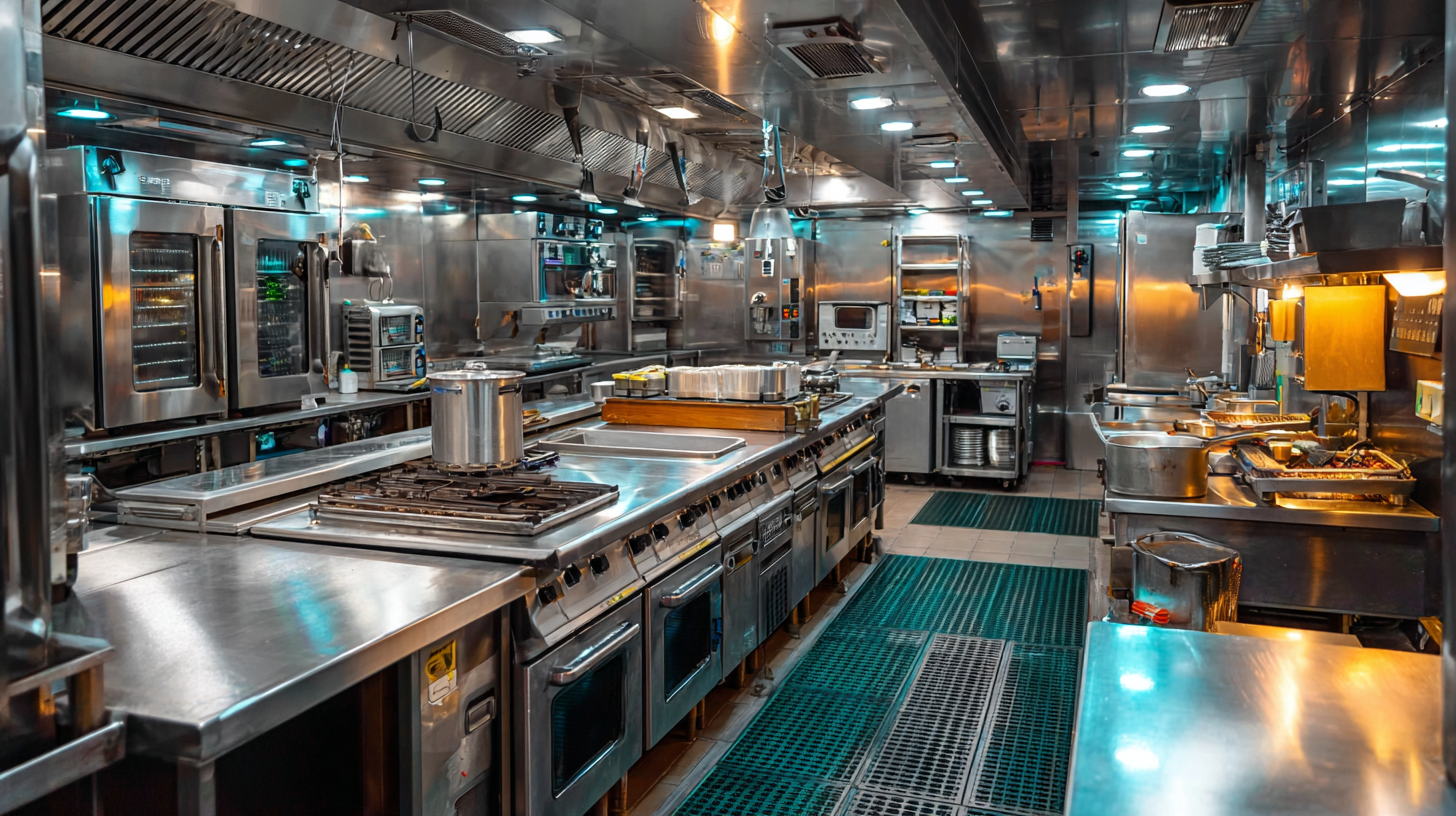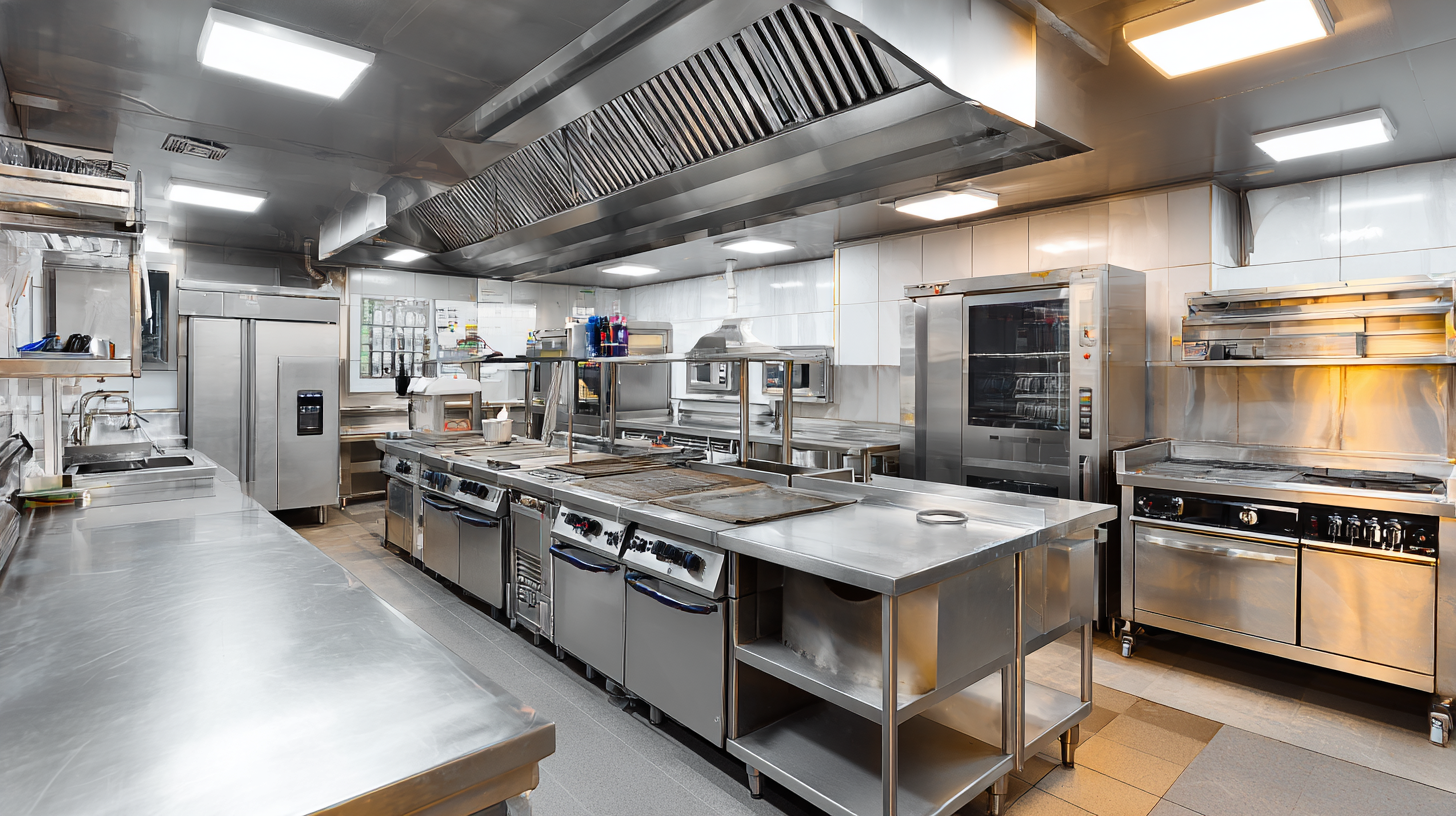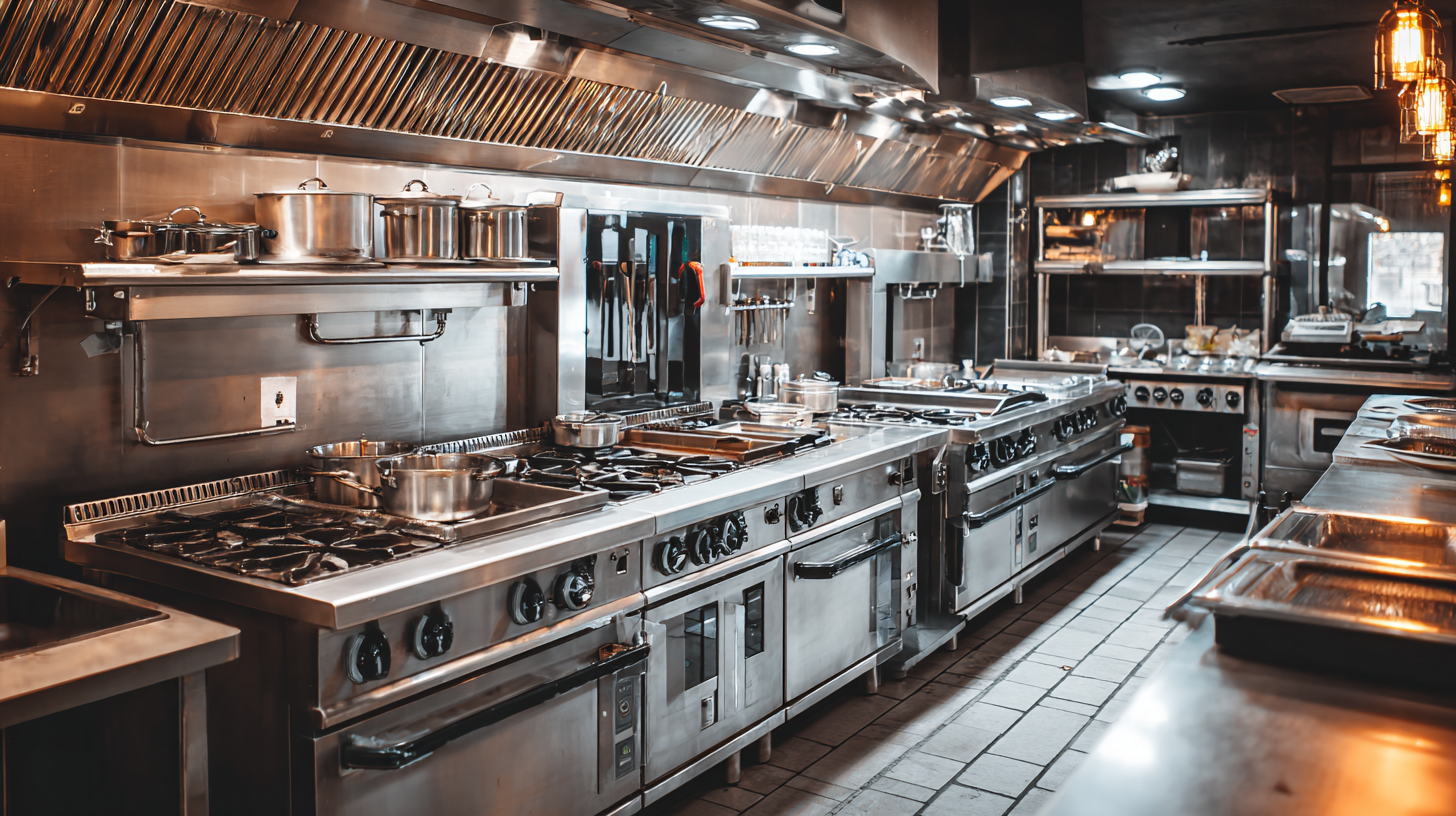Ultimate Guide to Choosing the Best Commercial Food Service Equipment for Your Business
In the rapidly evolving landscape of the foodservice industry, selecting the right Commercial Food Service Equipment is crucial for ensuring operational efficiency and maintaining high standards of quality. According to a report by IBISWorld, the food service equipment manufacturing market is projected to grow by 4.7% annually, reaching a value of over $9 billion by 2024. This growth underscores the increasing demand for innovative and reliable equipment that can withstand the pressures of a busy kitchen environment. With options ranging from high-capacity ovens to energy-efficient refrigeration units, the right choices not only enhance food preparation processes but also contribute to overall cost savings and sustainability. As businesses navigate this competitive market, understanding the various types of commercial equipment available is essential to making informed purchasing decisions that will drive success in the long run.

Essential Factors to Consider When Selecting Commercial Food Service Equipment
Choosing the right commercial food service equipment is crucial for the success of any food business. When selecting equipment, consider factors such as durability, efficiency, and your specific operational needs. High-quality equipment not only enhances productivity but also ensures food safety and consistent performance. Investing in reliable appliances will save costs on repairs and replacements in the long run.
Tip: Always assess the volume of food you intend to produce. This will help you determine the size and capacity of the equipment you need. For instance, a busy restaurant may require commercial ovens and refrigerators with larger capacities compared to a small café.
Another essential factor is energy efficiency. Opting for energy-efficient models can significantly reduce your utility bills and minimize your environmental impact. Look for equipment with energy labels and reviews to find the most efficient options available.
Tip: Think about the layout of your kitchen when selecting equipment. Make sure to choose items that fit well within your space and allow for smooth workflow. Utilize vertical space efficiently, and ensure that there’s enough room for staff to operate comfortably while using the equipment. This attention to layout can boost your kitchen’s productivity and safety.
Comparing Different Types of Commercial Kitchen Equipment: Pros and Cons
When selecting commercial kitchen equipment, it’s essential to compare the various types available, each with its own merits and drawbacks. For example, while traditional ovens have been a staple in many restaurants for years, modern pizza ovens offer faster heating times and specialized cooking for optimal crust results. A study showed that the right pizza oven can reduce cooking times by up to 40%, providing better service to customers. Additionally, outdoor pizza ovens not only cater to a unique cooking style but also enhance the dining experience by creating a visual spectacle.
Another comparison worth noting is between food processors and traditional chopping methods. Industry reports indicate that utilizing food processors can improve efficiency by 30% in a busy kitchen environment, allowing chefs to focus on creativity rather than prep work. However, some chefs argue for the tactile experience and precision of manual chopping, especially when dealing with delicate ingredients. For those who prioritize speed and consistency in their food prep, investing in a high-quality food processor could be invaluable.
Tip: Always consider the space and layout of your kitchen before purchasing equipment. Ensure that new installations do not compromise workflow. Additionally, don't overlook the value of multi-functional appliances, which can save both space and money in the long run.
Ultimate Guide to Choosing the Best Commercial Food Service Equipment for Your Business
| Equipment Type | Pros | Cons | Best Used For |
|---|---|---|---|
| Commercial Ovens | Even cooking, versatile, multiple cooking modes | High initial cost, requires space, maintenance | Bakeries, restaurants, catering |
| Refrigeration Units | Preserves food freshness, various sizes | Energy consumption, may need frequent servicing | Restaurants, grocery stores, food service |
| Fryers | Quick cooking, crispy food, high demand items | Safety risks, oil disposal, maintenance | Fast food, restaurants, bars |
| Mixers | Ease of use, consistent results, multiple attachments | Limited function, can be heavy, takes up space | Bakeries, catering, food production |
| Dishwashers | Efficiency, sanitation, saves labor | High upfront cost, maintenance, noise | Restaurants, cafeterias, catering services |
Evaluating Your Space: How to Choose Equipment that Fits Your Layout
When evaluating the layout of your commercial kitchen, it’s crucial to consider how the arrangement of your space will affect workflow and efficiency. According to the Foodservice Equipment & Supplies (FE&S) magazine, over 50% of restaurant owners report that poor layout can lead to significant operational challenges, including extended service times and increased employee fatigue. Therefore, selecting the right food service equipment tailored to your specific layout can greatly enhance productivity.
To achieve an optimal fit, assess the dimensions of your kitchen and consider high-efficiency equipment that maximizes space. For instance, using modular equipment can allow for flexibility and scalability in your kitchen design. A report by the National Restaurant Association indicates that 76% of operators prioritize equipment that not only fits their space but also meets sustainability standards. This approach not only promotes better organization but also aligns with the growing consumer demand for eco-friendly practices in the food service industry. Prioritizing space evaluation will ensure that your investment in commercial food service equipment pays off in operational efficiency and customer satisfaction.

Budgeting for Success: How to Invest Wisely in Food Service Equipment
When investing in commercial food service equipment, careful budgeting is a key component to achieving long-term success for your business. Understanding your specific needs based on the size and type of your establishment is essential. For example, a small home-based food business will have different equipment requirements compared to a larger restaurant or hotel. Assessing your budget carefully will help you prioritize essential items and avoid unnecessary expenses.
In today's competitive market, it's crucial to select equipment that not only meets your operational needs but also provides value for your money, ensuring efficiency and reliability. Investing in quality kitchen equipment enables you to streamline processes and ultimately enhance your service delivery. As the hotel sector revamps its kitchens, it’s clear that the right equipment can significantly impact productivity and customer satisfaction. By approaching your equipment purchases strategically, you can equip your business for success while staying within financial limits.
Maintenance Tips to Extend the Life of Your Commercial Kitchen Equipment
Maintaining commercial kitchen equipment is crucial for ensuring longevity and optimal performance. Regular maintenance not only extends the lifespan of your appliances but also helps in preventing costly repairs down the line. A simple yet effective practice is to establish a regular cleaning schedule. After each use, clean surfaces to remove grease and food residue, and perform deep cleaning at least once a week. Attention to detail in cleaning ensures that your equipment operates efficiently and remains hygienic.
Another vital aspect of maintenance is routine inspections. Check hoses, connections, and electrical components for any signs of wear or damage. This proactive approach can identify potential issues before they escalate into significant problems. Additionally, consider investing in professional servicing on a semi-annual basis. Certified technicians can conduct thorough checks and tune-ups that you might overlook, ensuring your kitchen equipment functions at its best. By prioritizing these maintenance tips, you can foster a reliable and efficient kitchen environment conducive to delivering excellent food service.

